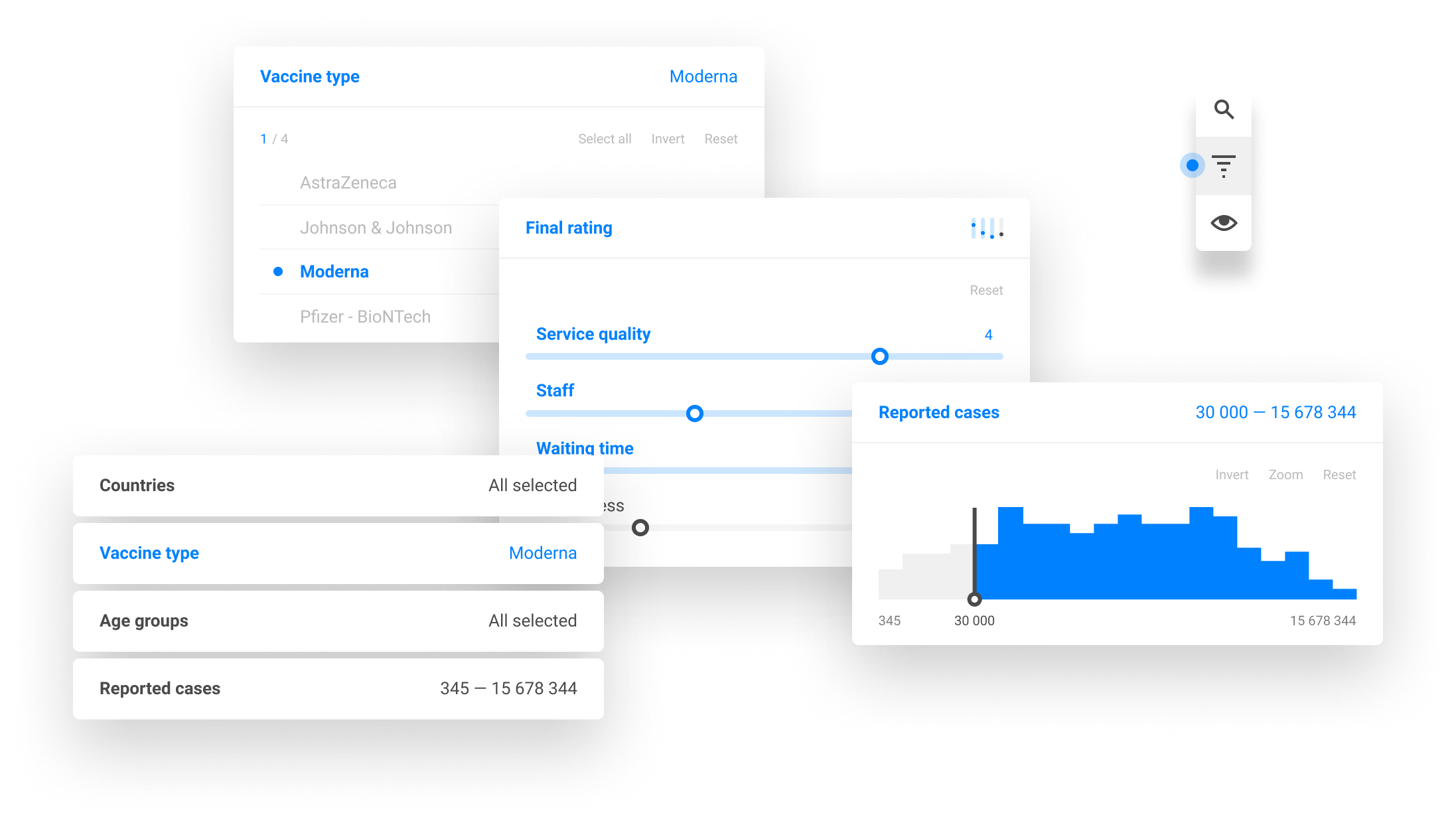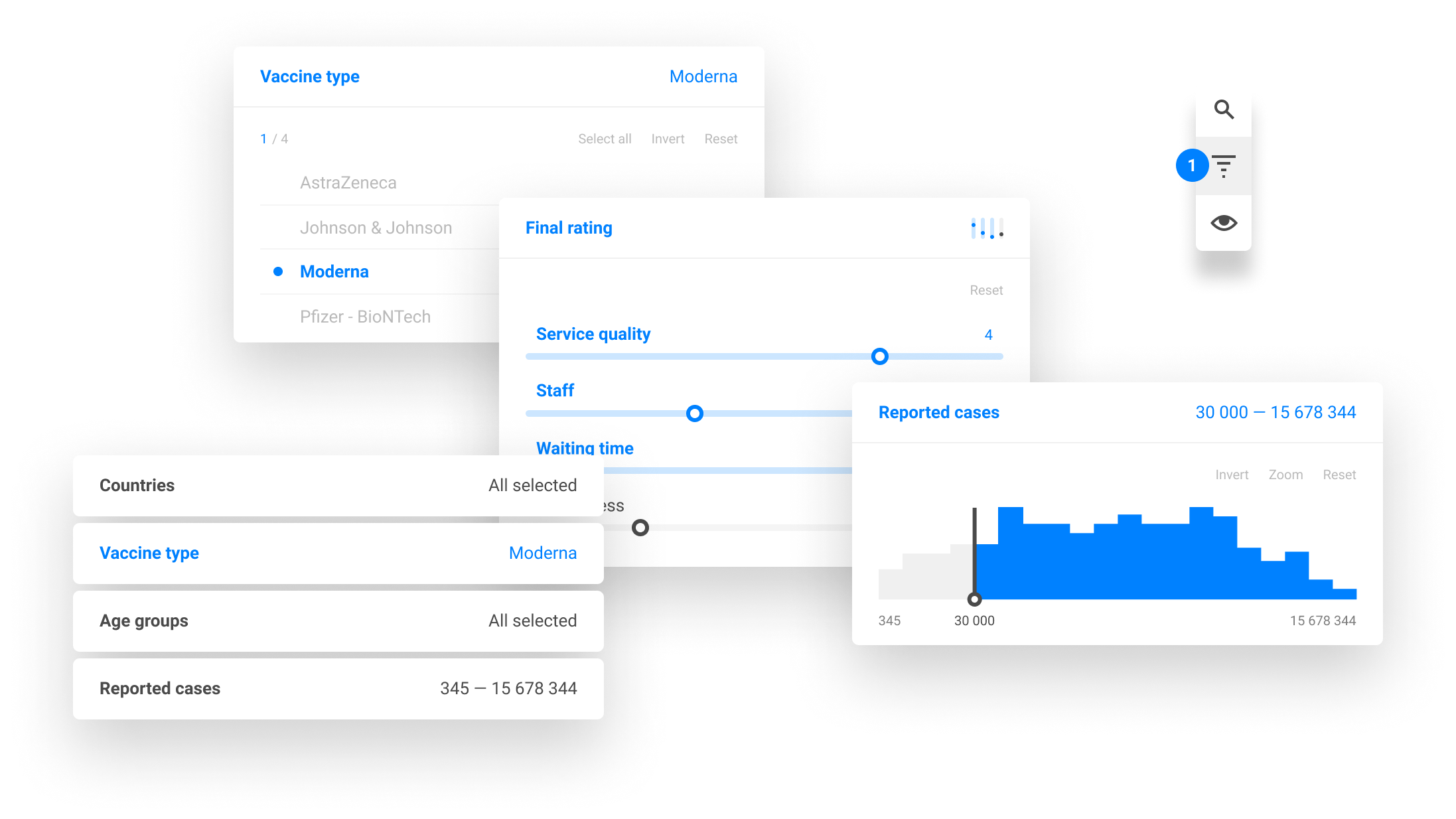Most importantly, every active filter was forced to have direct impact on the visualization in the map. Strictly showing just that, what user specified to be shown. "Empty" objects were removed from the map making the visualization finally much more legible and clean. Advanced options for visually preserving filtered-out objects (for the purpose of better orientation, for example) were added as well.

All active filters were gathered at one place, visually distinguished from inactive filters. Active filter indication and counter was added and made visible at any time in any state of the View. This gave users finally the control and confidence over currently active filters.

Every filter type was redesigned, unified and enhanced with useful options. The Filters panel was newly structured by organising filters into logical groups which improved their findability and overall understanding of the data structure.
Other options such as filtering by selection in the map was also added. This immediately became an essential tool for powerful spatial analysis. Or turning a "temporary" filter into a "permanent" one by a single click solved the conceptual disparity between these two different types of filters.
Other options such as filtering by selection in the map was also added. This immediately became an essential tool for powerful spatial analysis. Or turning a "temporary" filter into a "permanent" one by a single click solved the conceptual disparity between these two different types of filters.



